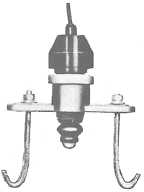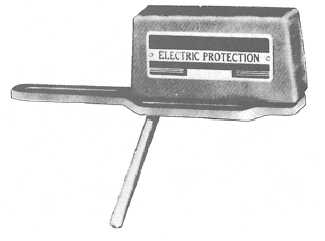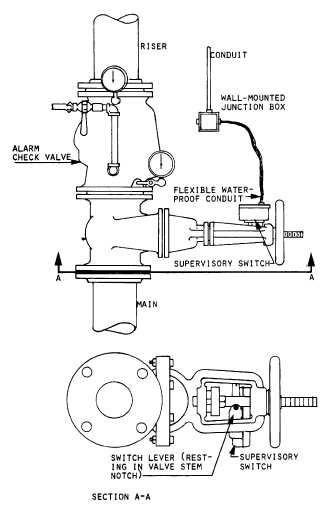opened no more than two turns or 20 percent of its total travel.
Outside screw and yoke (OS&Y) valve position indicators (figs. 8-24 and 8-25) are firmly attached to the valve yoke (fig. 8-26). The spring-loaded switch- operating lever or plunger rests in a smoothly tapered notch in the valve stem. When the valve is operated, the stem moves in or out; the lever or plunger moves up the incline at the edge of the notch. The switch is actuated before the lever or plunger is out of the notch. This causes a supervisory signal at the control unit and/or remote receiver.
A post indicator valve (PIV) will have a position indicator mounted to it (fig. 8-27). Usually

Figure 8-24. - OS&Y valve position switch (plunger type).

Figure 8-25. - OS&Y valve position switch (lever type).
a PIV is located outside the building and may be mounted on the ground or on the building wall. A spring-loaded lever rests against the side of the open/shut indicator, called a target. As the valve is operated, the target moves. The switch follows this movement. The position indicating switch is adjusted to cause a supervisory signal before the operating nut has rotated two turns or 20 percent of its full travel.
Nonrising stem valve position indicators are attached to nonrising stem valves, usually installed underground. The housing of the device is made of a noncorroding material such as brass. The switch itself is a magnetically operated, sealed reed switch. As the valve is operated, the magnet moves away from the reed switch. After the valve has

Figure 8-26. - OS&Y valve position supervisory switch installation.
Continue Reading